The Joint Expedition of the British Museum and the University Museum has been at work since November 1 at Ur of the Chaldees in southern Mesopotamia. It is about six miles east from the river on the edge of the Syrian desert and about eighty miles from Basra at the head of the Persian Gulf. The task that the Expedition undertook at the start was the excavation of the Temple of the Moon God. The following passages quoted from Mr. Woolley’s reports indicate the conditions under which the work is conducted and also the nature of the work and the discoveries already made. The Report of December 6th contains the following.
“Reaching Ur on October 27 we visited the mound and selected alternative sites for the expedition house and arranged methods for getting regular food supplies. On the following day I left for Bagdad, Messrs. Newton and Smith remaining behind at Ur to carry out preliminaries to excavation.
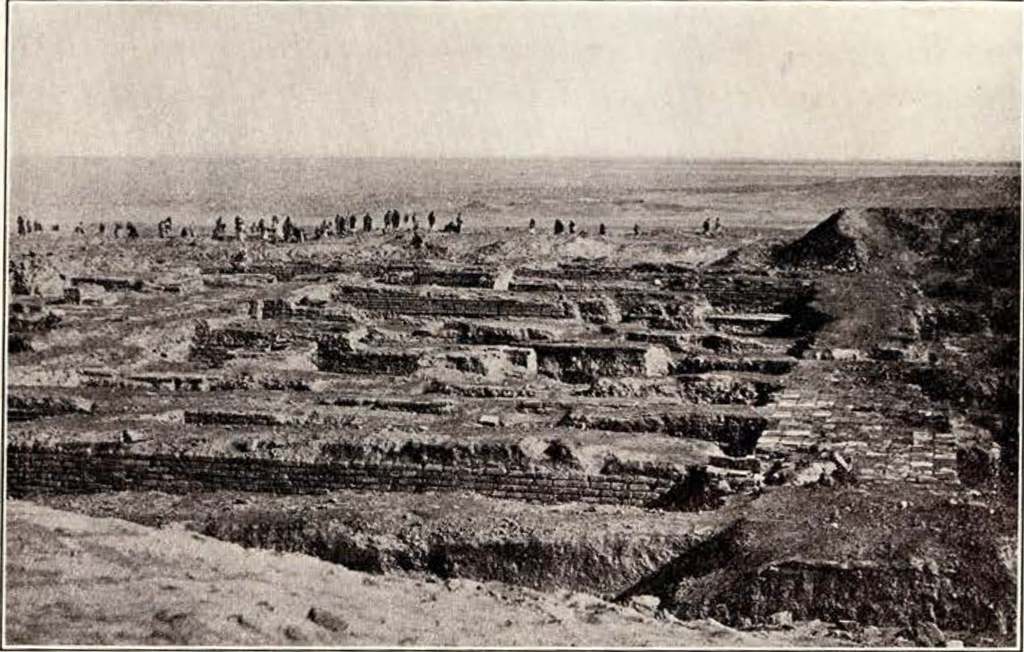
“I arrived at Bagdad on Sunday, October 29, and on Monday had interviews with H. M. King Feisal and His Excellency the High Commissioner, as well as Sabih Bey, Minister of Works, and other local authorities, English and native. I should like to remark especially on the interest shown by everyone in the work to be carried out by the Expedition and on the practical manner in which this interest was manifested by the willingness of all to give every kind of assistance. In Miss Gertrude Bell, the Honorary Director of Archæology for the Kingdom of Irak, whose residence is in Bagdad, we shall of course have a most sympathetic official. The Royal Air Force have agreed to make a special series of air photos of the site. Altogether my visit to Bagdad, which was of course necessary in any case, turned out as useful as it was made pleasant by the kindness of the people whom I met.
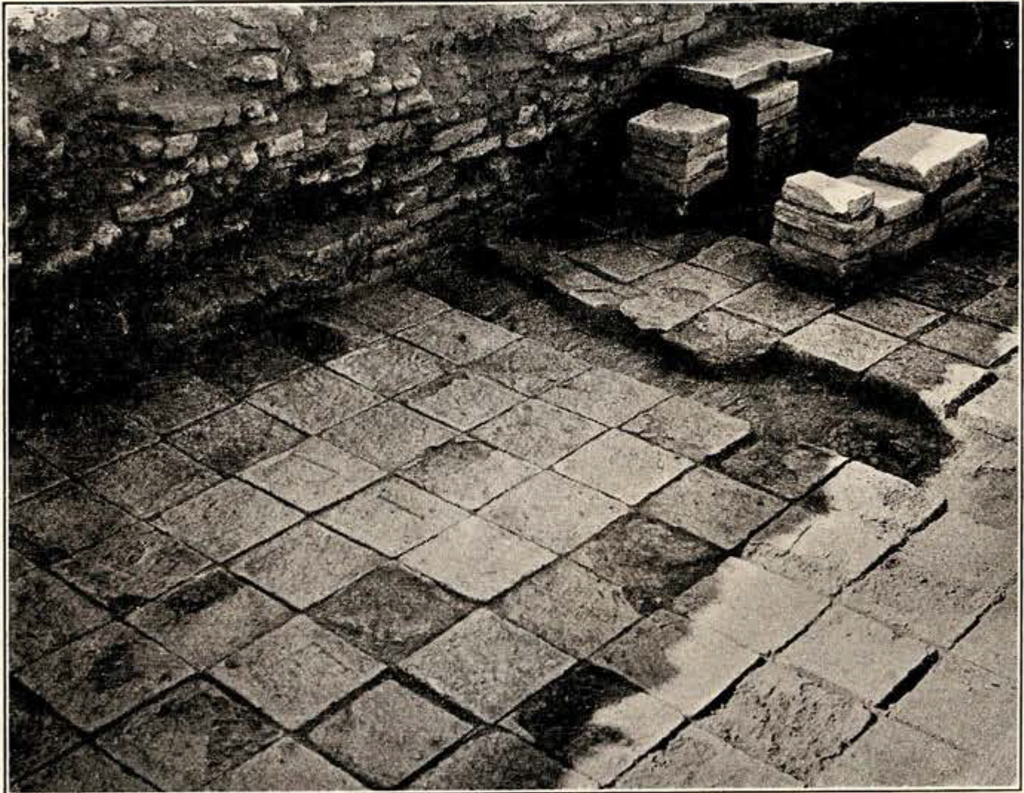
“I reached Ur again on November 2 and found that Mr. Newton had received a visit from the sheikh and had got the promise of workmen. He had already engaged a few men and had marked out the ground plan and started digging the foundations for the house of the expedition.
“More men have now been engaged and the numbers of the gang will be steadily increased up to the limit of our requirements.
“In the small hours of the night of November 7-8, our camp was attacked by six men armed with rifles. One of our guards was killed and a great deal of our personal effects stolen. The robbers have since been arrested and much of the stolen stuff recovered. Since that night, the camp has been guarded by an increased number of men, but as the arrest of the robbers has minimized the risk of a second attack, we have now reduced the guard to five men again.”
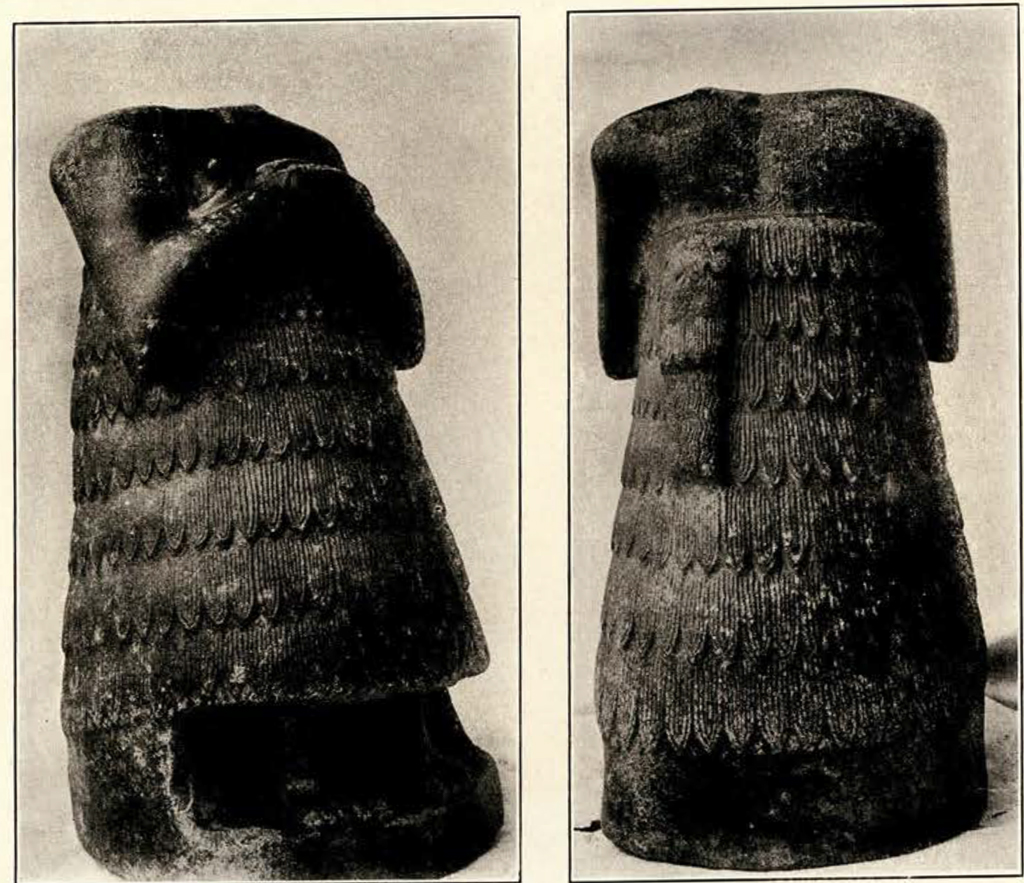
Under date of December 15, Mr. Woolley wrote in part as follows.
“Work on the site of Ur has proceeded normally. An average of 150 men have been employed and these men are now learning their business and becoming tolerably skilful. The weather has favored us throughout and there has been no stoppage owing to rain. The health of the members of the staff has been uniformly good. On November 29, the expedition house was finished and we moved into our permanent quarters. Proper accommodation has certainly had the best effect on the work of all of us. Photography has become possible. Architectural work and drawing can be done in a way which was impossible in tents, and material of all kinds can be dealt with in an orderly and systematic fashion. Under canvas, we could never have coped with the mass of stuff which the last three weeks have brought to light.
“Minor difficulties with local sheikhs who picketed our camp and took forcible toll of our men’s wages, have been satisfactorily settled and our relations with our native neighbours are on an exceptionally excellent footing. I have to acknowledge every sort of assistance from the British officials of the country.
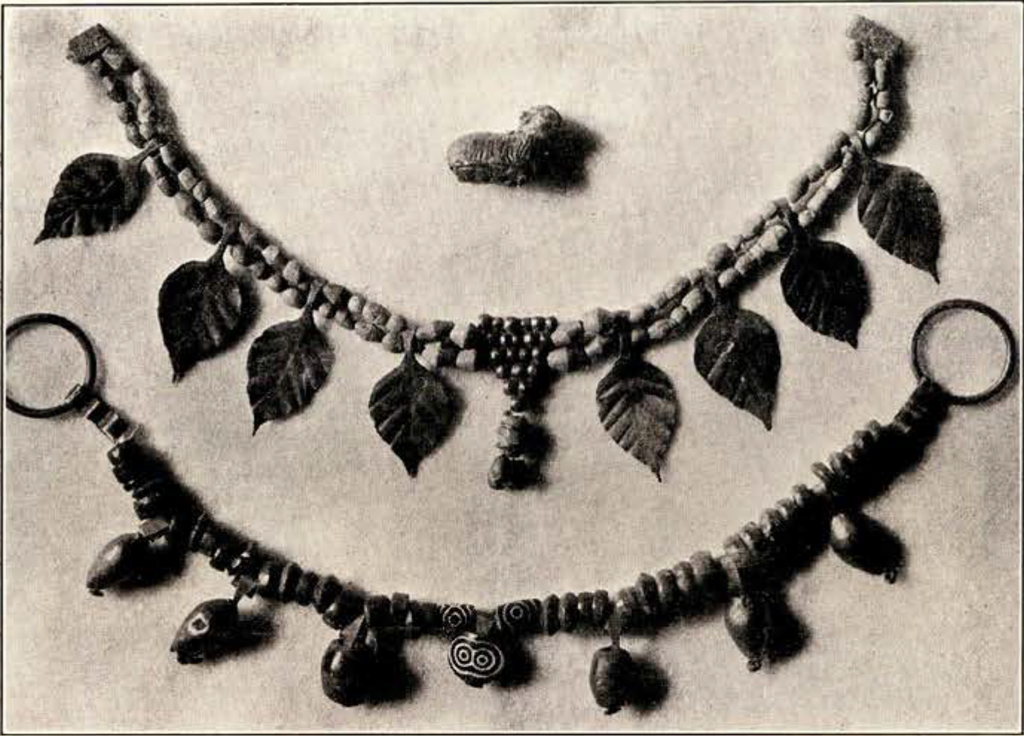
“My second trial trench was expected to hit upon a building of some importance. It did, in fact, cut across the sanctuary of the Temple of E-NUN-MAH [The Moon God] and work has been confined to this site which is likely to engage all our efforts for some time to come.
“This Temple of the Moon God was apparently the biggest, as it was certainly one of the most famous of the temples of Mesopotamia. The building stood on a platform supported by a wall nine feet thick which still is preserved to more than a man’s height and with its double buttresses forms a most imposing mass of masonry.
“We are not yet in a position to give a detailed history of this building but this was remarkably long and full of vicissitudes. From the dated objects which we have found, it is clear that it was already standing early in the third millennium B. c. and it is possible that its foundations go back to the fifth millennium B. c. The earliest building of which we have as yet found traces is, as a matter of fact, well preserved considering its antiquity. It is solidly constructed of unbaked rectangular bricks. The authorship of this building is unknown to us. It probably had a long life and at some time or other it was patched by a king who used baked brick for his work. Later still, this wall was razed and rebuilt at about 2000 B. c., at which time the whole Temple was reconstructed of burnt brick, the new walls being religiously erected on precisely the same lines as the old. Wherever we find burnt brick walls of early date, we find mud brick walls of earlier date underneath them at a lower level.
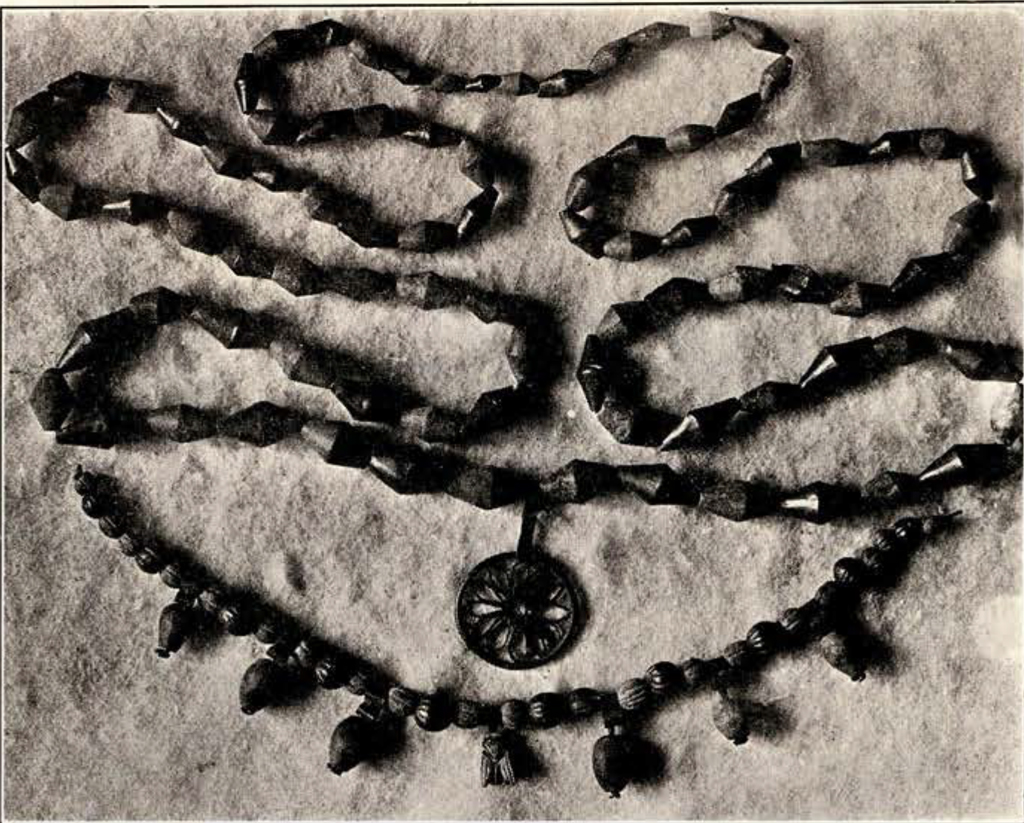
Museum Object Numbers: B15246
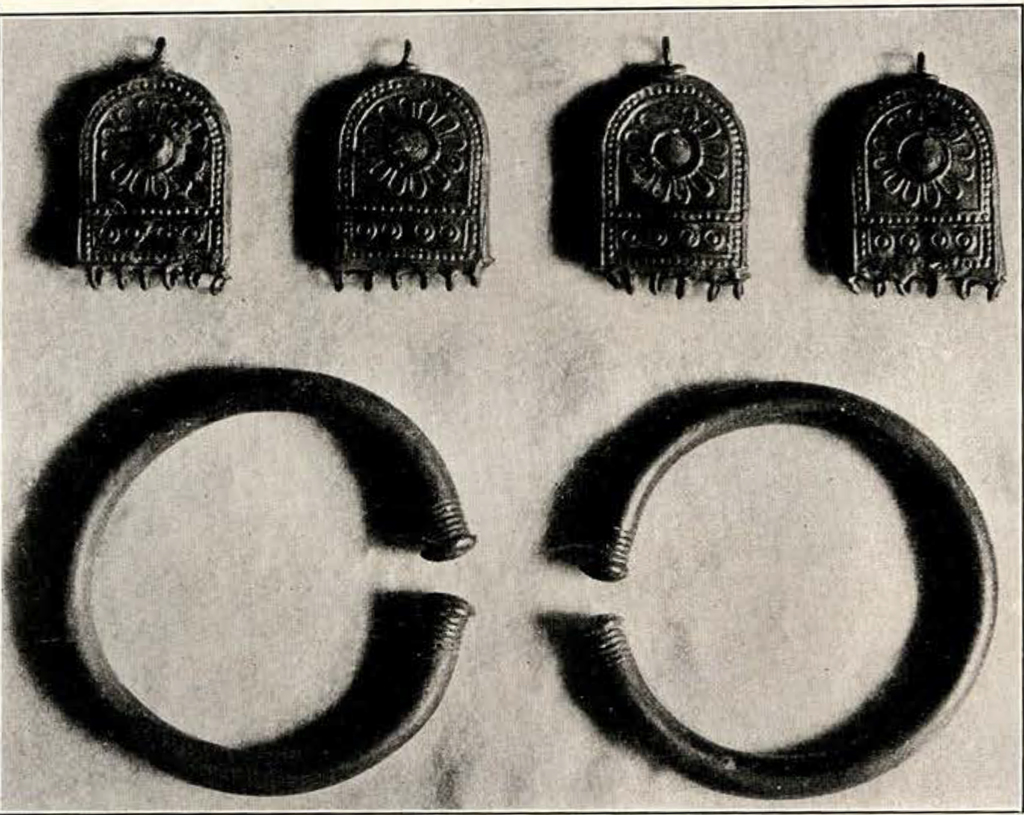
Museum Object Numbers: B15244
Image Number: 9168
“The earliest inscriptions identifiable with certainty are of about 2630 B. c. Among the later inscriptions are those of Nebuchadrezzar II (604-562 B. c.), who restored parts of the building. There are also inscriptions of Nabonidus (555-538 B. c.), who put in new pavements and new walls with inscribed bricks on which are recorded his restoration.”
This reference to Nabonidus has a special interest, for it is recorded of him on a tablet that has been known to scholars for some time that, when he was king at Nineveh, he dedicated his daughter to the Temple of the Moon God at Ur where she became high priestess and oracle of the God. She lived in a house of her own within the Temple precincts where a watch was set night and day. It was her duty to read divinations and to interpret the changes in the moon.
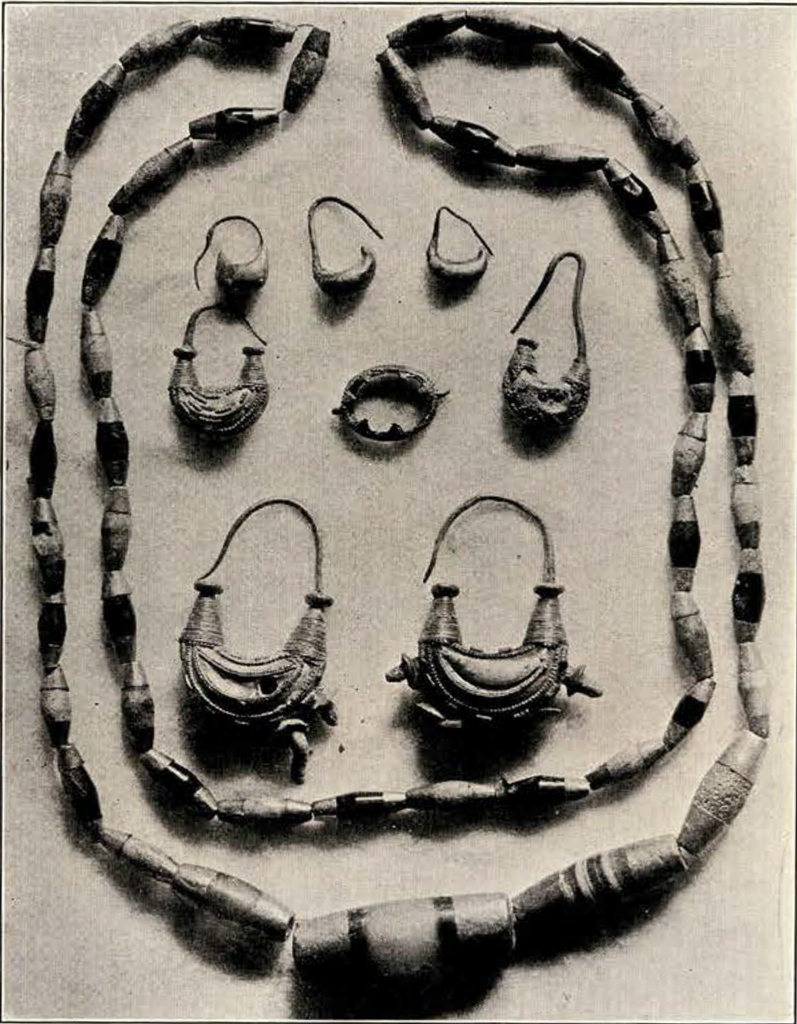
Museum Object Numbers: B15242
Image Number: 9167
Under date of January 15, Mr. Woolley wrote in part as follows.
“During the last month the work has proceeded normally. In the whole of our season up to date, the weather has been especially favourable and only two working hours have been lost through rain. At Christmas time our staff took two days holiday but, apart from that, there has been no interruption of any sort. The light railway has arrived and is now being laid down. The track, together with sleepers, crossings, curves and points, with eight tip wagons, has been presented to the Expedition by the Irak Railways.
“While removing a Persian brick pavement which overlay the one put down by Nebuchadrezzar, we discovered a very important cache of treasure consisting of gold rings, bracelets, beads, earrings, lockets and pendants, a female statuette in gold, silver vases, bracelets and rings, bronze vases and engraved seal stones, and great quantities of beads of lapis lazuli, carnelian, agate, amethyst, malachite, etc.”
“The temple wall is of different dates. At the lowest level we find a straightfaced wall of crude brick which probably represents the original enclosure put up by Ur-Engur [2300 B. C.] when he set aside as sacred the area occupied by the older temples and part of the mound . . . of the primitive settlement. At a later period there was built over this wall decorated with vertical recesses in the brickwork. The date of this wall cannot yet be settled. It, in turn, fell into decay and was restored in the New Babylonian period, while further alterations and repairs were carried out still later by the first of the Persian kings. In the northern gate of the northeast side we found in position the hinge stone of Bur-Sin reused by Cyrus and built by him into a hinge box which incorporated bricks of Nabonidus. The southern gate of the same side of the temple wall contains a hinge box of Cyrus the Great. In another gate the hinge stone bears the inscription of Nabonidus. . . . The long history of this wall is therefore fairly illustrated in the parts which remain.
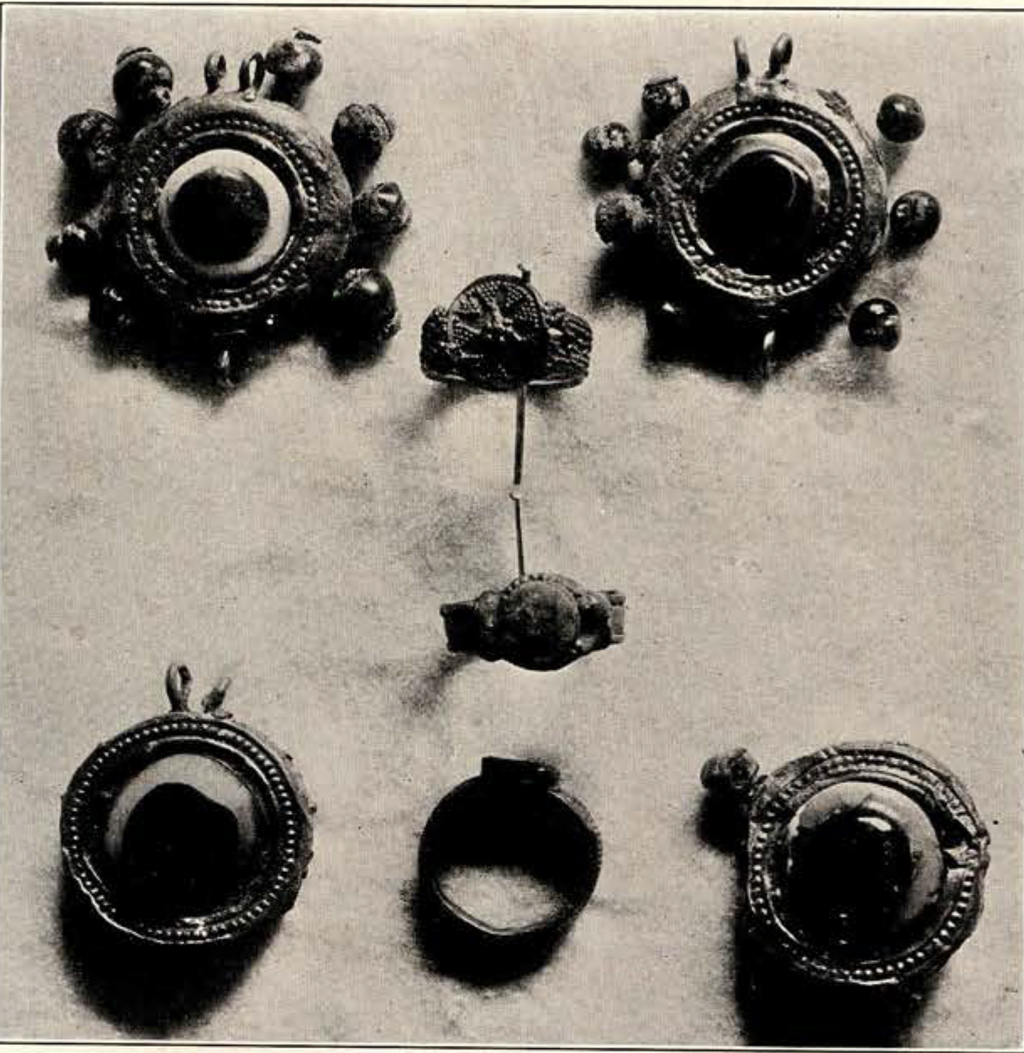
Museum Object Numbers: B15240
Image Number: 9166
“The Ziggurat gate which is a reconstruction due wholly or in part to Nabonidus was cleared and found to present unusual features. The brickpaved gatehouse buried deeply beneath the debris had been destroyed by fire. . . . Against the inner door there lay among the burnt timbers of the roof a fine diorite statue of Enannatum, King of Lagash [3200 B. C.]. The head was broken off in antiquity and the neck smoothed down. Around the right upper arm and across the back of the figure runs a long inscription well preserved. One hand, which was broken away, was found separately. The figure is otherwise intact. The presence of this king’s statue in the sanctuary of Ur is difficult to explain. It may possibly be a trophy of war.
“In my last report I mentioned a brick well. . . . This has now been partly cleared to a depth of 12 meters and has produced a whole series of large inscribed cones. The complete excavation of the well will be left over until a future season.”
The ruins of Ur of the Chaldees were visited at the suggestion a Dr. Rawlinson by J. E. Taylor in 1854-55. Mr. Taylor made an excavation and described the ruins in the Journal of the Royal Asiatic Society, 1855. Later, Rawlinson himself visited the site and identified it as Ur of the Chaldees. Later still, it was visited by W. E. Loftus who described it in Travels and Researches in Chaldea. A great brick tower of the Temple of the Moon God, almost buried among the ruins, is mentioned by all of these writers. During the war the site was examined by Capt. R. Campbell Thompson. In 1918, Mr. H. R. Hall was sent on a special mission from the British Museum to Babylonia, and during the early part of 1919 Mr. Hall conducted excavations at Ur. His report on these excavations was published in the Proceedings of the Society of Antiquaries, December, 1919.
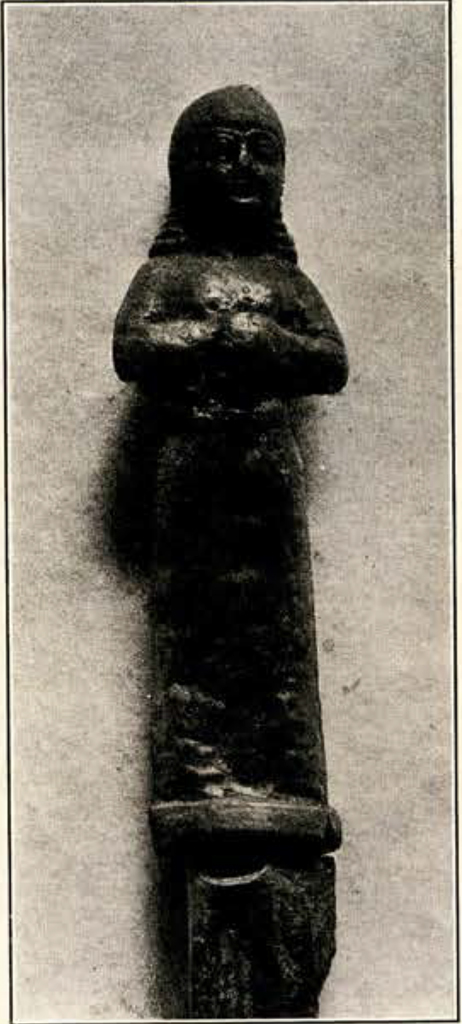
Museum Object Number: B15241
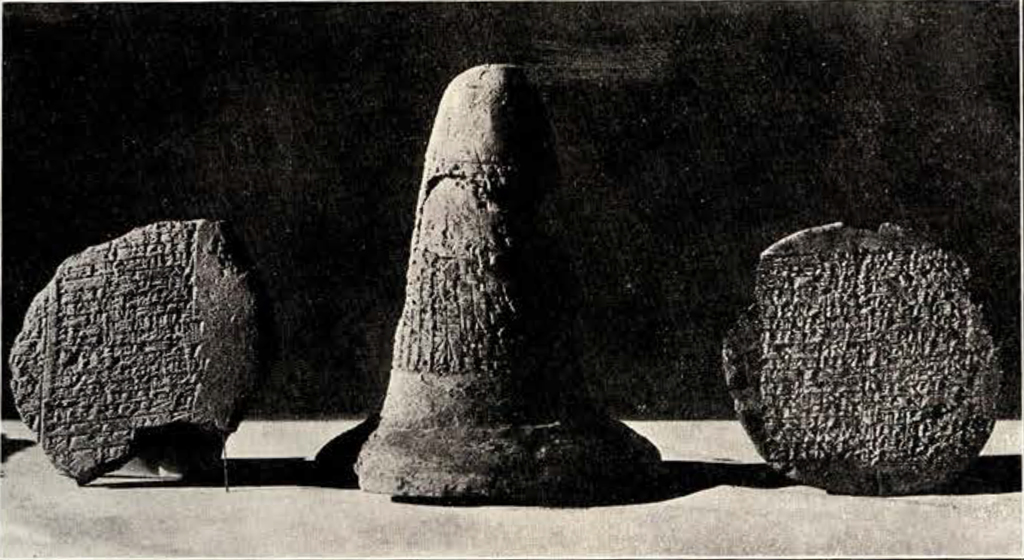
Image Number: 9159
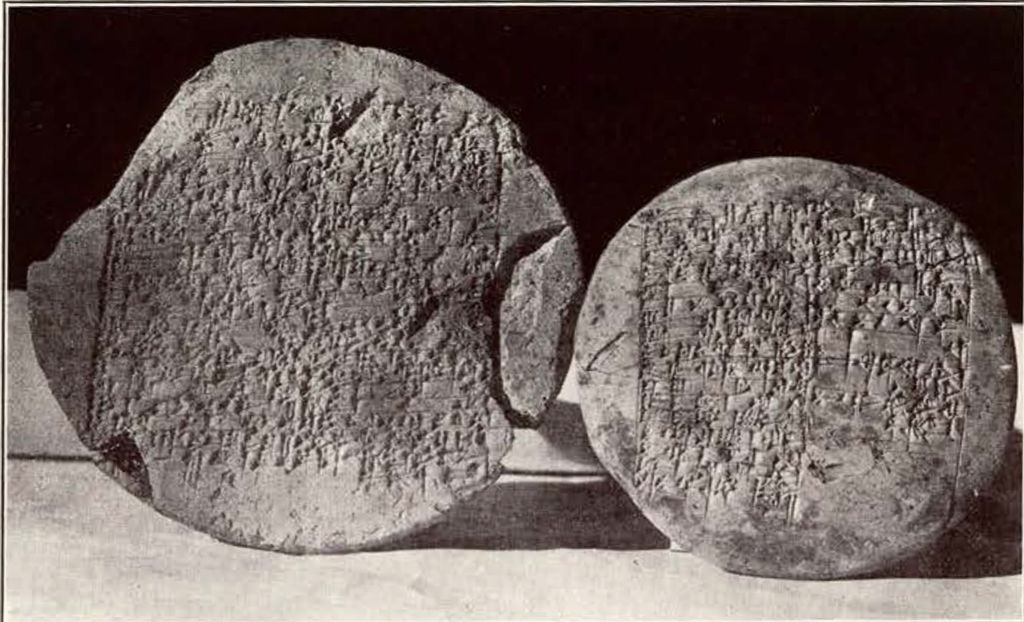
Image Number: 9158

